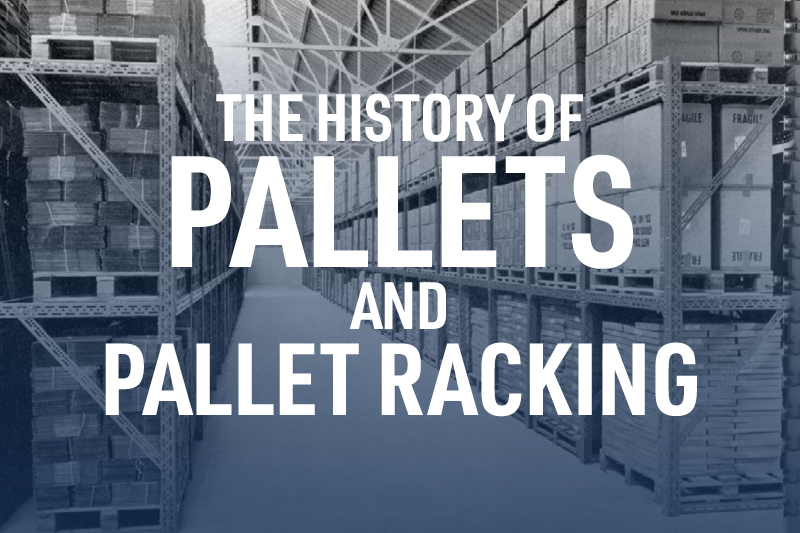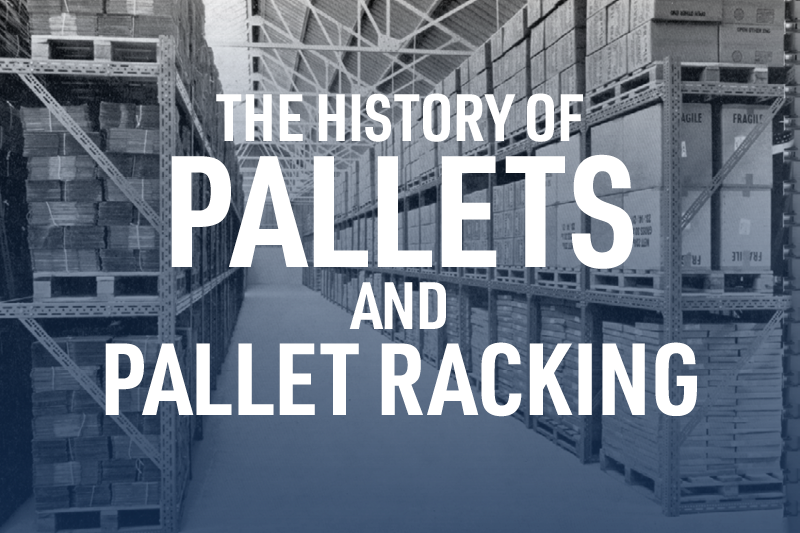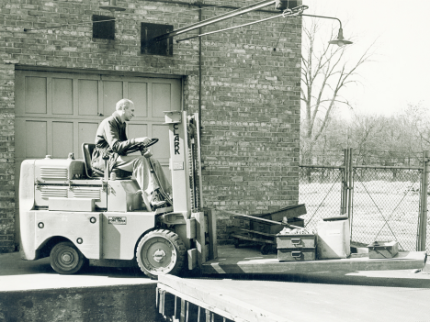

A while back, we wrote about The History of the Forklift and were surprised by the article's popularity. Lilly takes pride in its 100-year history and we love to share information and ideas with others. So, for all you history buffs out there, here’s an article about the history of pallets and pallet racking.
Civilizations have been storing food and other supplies in dedicated buildings since The Bronze Age, possibly earlier. But historians credit ancient Egyptians as the first to use pallets (technically, skids) to transport items from one place to another.
By the late 1800s, hand trucks were used to maneuver skids around warehouses and factories. It wasn’t until the first forklift with a mast debuted in 1923 that pallet development took off.

The History of Pallets
Initially, pallets came in many shapes and sizes. By the 1930s, pallet sizes were (mostly) standardized.
Pallet sizes still vary, but the most common pallet size in North America is the 48” × 40” GMA (Grocery Manufacturers Association) “double-faced” pallet with a center stringer. About one in three pallets is a GMA-sized pallet.
During World War II, forklift adoption and pallet use surged — primarily for floor stacking. Conventional pallet racking wasn’t widely used until mid-century.
The Evolution of Pallet Racking
Shelving made from slotted angle strips of steel was invented in the late 1930s. The inventor owned an engineering company called Dexion, Limited. By the mid-1950s, Dexion slotted angle components were used to build a variety of structures, including pallet racking.
The original pallet rack systems were only three levels high. It wasn’t until 1968 that a new type of pallet rack came about — drive-in pallet rack. The next innovation came in 1987 when a patent was issued for a gravity flow (aka pallet flow) storage system.
You may be surprised to learn that Automated Storage and Retrieval (AS/RS) has been around since the 1960s. Of course, it was much different than the computerized version we know now.
What's Next?
Only time will tell, but it’s a good bet that both pallets and pallet rack systems will continue to evolve.
For pallets: Some industries no longer use wooden pallets because plastic pallets are cleaner and more durable. Will the entire material handling industry switch to plastic or aluminum pallets one day?
For pallet racking: There are already so many different types of pallet racking it’s hard to imagine where the next innovation will come from. But stay tuned; we promise to keep you posted!
Warehouse Automation & Storage Solutions
Our experienced and friendly warehouse experts can help you do more with your existing space, maximize throughput, improve productivity and lower labor costs. Contact us to learn more about:
- Warehouse Automation
- Pallet Racking
- Warehouse Mezzanines
- In-Plant Offices
- Conveyors
- VLMs
- Warehouse Safety Products
We’re proud to support local businesses in Alabama, Mississippi, Tennessee and eastern Arkansas. Contact us online or by phone 844-LILLYCO (1-844-545-5926) with any questions you may have, or come say hello at one of our 13 locations across the Mid-South.
Arkansas - Jonesboro
Alabama - Birmingham, Dothan, Irondale, Madison, Mobile, and Montgomery
Mississippi - Tupelo and Richland
Tennessee - Jackson, Kingsport, Knoxville, and Memphis
Posts by Tag
- Forklift (56)
- Forklift Service (17)
- Electric Forklifts (13)
- Forklift Attachments (11)
- Forklift Safety (10)
- Toyota Forklifts (10)
- Warehouse Planning (9)
- Loading Docks (7)
- Pallet Racking (7)
- Parts (7)
- Clark Forklifts (6)
- Customer Solutions (6)
- Material Handling Education (6)
- Purchasing Options (6)
- Forklift Rental (5)
- Heavy Equipment (5)
- Forklift Batteries (4)
- Forklift Fleet Management (4)
- Forklift Tires (4)
- Forklift Training (4)
- Products (4)
- Aerial Equipment (3)
- Forklift Accessories (3)
- Specialty Forklifts (3)
- Used Equipment (3)
- Yard Spotter Trucks (3)
- IC Forklifts (2)
- Linde (2)
- Manitou (2)
- Pallet Jacks (2)
- Warehouse Doors (2)
- COMBiLift (1)
- Custom Shop (1)
- Forklift Brakes (1)
- Forklift Warranty (1)
- Gehl (1)
- Komatsu (1)
- Product Review (1)
- Recruitment (1)








